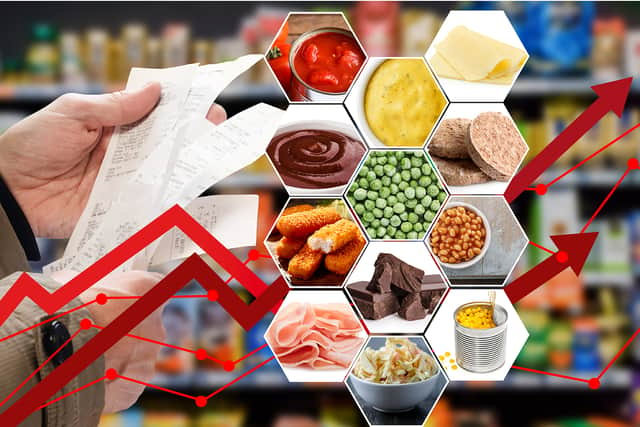Exclusive:How do UK supermarkets compare for price rises on food staples? Check with our interactive chart
and live on Freeview channel 276
From baked beans to bacon, bread to porridge oats, the cost of living crisis has seen prices rocket for common food, drink and household products.
NationalWorld has been tracking the price of own brand supermarket products for over a year – and we have created a handy tool that will allow you to check what you were paying a year ago for the products you buy at five major supermarkets.
It comes as the latest Office for National Statistics (ONS) data showed food inflation remained stubbornly high in April, at 19.3%. This means prices are on average 19.3% higher than they were in April 2022.
But the ONS does not reveal the exact products or brands it tracks to create its inflation index, nor what level of inflation is seen at different shops. Its measure of food inflation encompasses a range of different types of items, and will include luxury or non-essential items alongside staples (although essential items, or products we spend a bigger chunk of our money on, do count more towards the overall calculation).
We have taken online snapshots of prices for almost 70 staple products for June 2022 and June 2023, at Aldi, Asda, Morrisons, Sainsbury’s and Tesco, to track how prices have changed.


The data captures mid-tier own-brand products – that is, typically the products in between their value or budget lines (for instance Asda Just Essentials, Morrisons Savers) and more luxury offerings (Tesco Finest, Sainsbury’s Taste the Difference). We have also been separately tracking price rises across value ranges.
How to use our food prices chart
You can see how prices have changed for these food, drink and household cleaning products in that time in our interactive column chart below. Select a type of product from the drop down menu and compare price rises (or drops) across the different supermarkets. If you can’t see the chart, you can open it in a new window.
Take a can of baked beans. Between June 2022 and June 2023, our tracker shows the price of an own-brand can of baked beans has risen by an average of 32% (or 12p) across Aldi, Asda, Sainsbury’s and Tesco (there was no equivalent own-brand at Morrisons for this period). The sharpest increase was at Asda, where the price of a can rose by 43%, from 35 to 50p.
Loading....
Other items to have seen sharp rises include rice pudding (average rise of 67% at Aldi, Sainsbury’s, Tesco and Asda), marmalade (up 54% across the same shops) and frozen peas (up 53%, same shops).
Not all items were available at every shop, and some items were not in stock (and did not have a price displayed) in both months.
Why are food prices so high - and when will they come down?
Analysis by NationalWorld has found that the UK has been experiencing worse food inflation than most major European economies
Food prices have been impacted by many factors during the cost of living crisis, including the Russia-Ukraine war, which has driven up the cost of farming inputs and key ingredients,. Poor weather has also played a part, and caused shortages of some foods, while Brexit has also been blamed, with the London School of Economics saying it has caused a third of food inflation since 2019.
Supermarkets have also been accused of ‘greedflation’ – hiking of prices to boost profit margins) – which they deny. Regulator the Competition and Markets Authority (CMA) has said it has not seen any evidence of it “at this stage” but is monitoring the situation, while Chancellor Jeremy Hunt met with food bosses earlier in May in an apparent bid to apply pressure on them to pass any price drops onto consumers more quickly.
There are hopes that food inflation may have now peaked, however. According to the latest British Retail Consortium and NielsenIQ calculations, people in the UK faced food price inflation of 15.4% in the first calendar week of May, down from 15.7% the previous month. While this means prices are still rising, they are rising less quickly.
British Retail Consortium chief executive Helen Dickinson said: “While overall shop price inflation rose slightly in May, households will welcome food inflation beginning to fall. The slowdown in inflation was largely driven by lower energy and commodity costs starting to filter through to lower prices of some staples including butter, milk, fruit and fish. Conversely, the price of chocolate and coffee rose off the back of the ongoing high global costs for these commodities.”
Ms Dickinson added that “fierce competition” among supermarkets was keeping British food “among the cheapest” available amongst comparable European economies. She said food inflation “might be peaking” but warned the government against any moves that could damage the sector’s efforts. It comes as the government is considering implementing a food price cap in supermarkets, to cut shelf prices for staple items.
Comment Guidelines
National World encourages reader discussion on our stories. User feedback, insights and back-and-forth exchanges add a rich layer of context to reporting. Please review our Community Guidelines before commenting.
